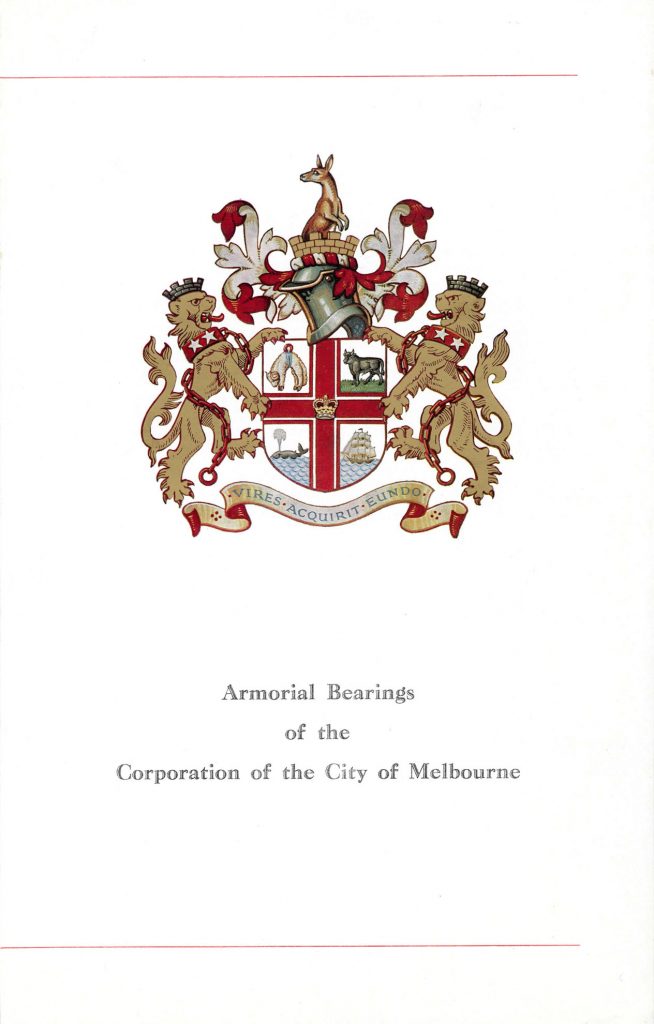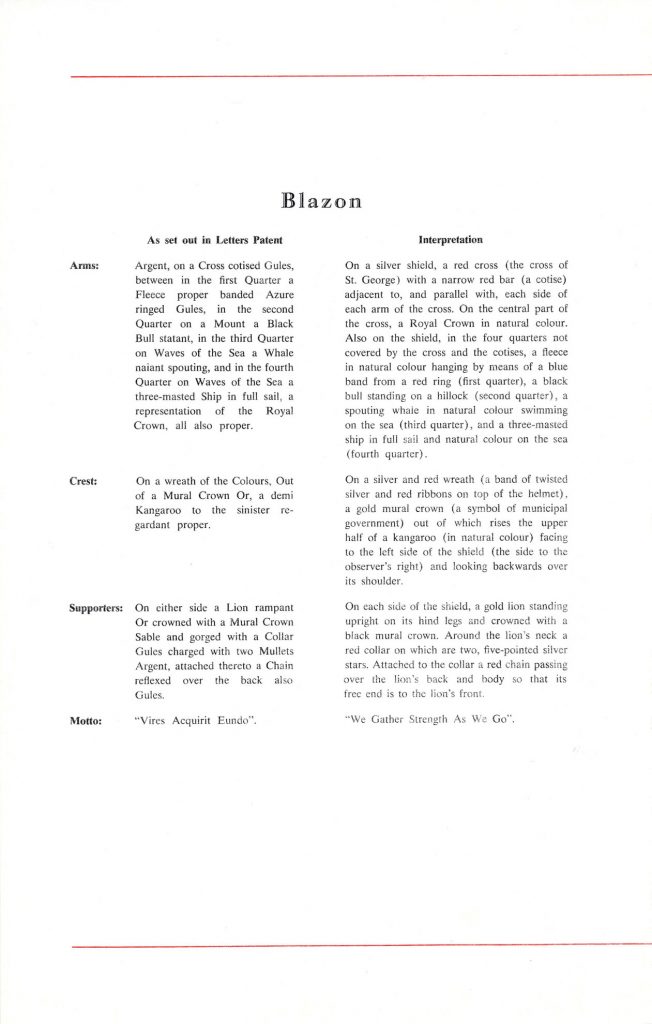Armorial Bearings of the Corporation of the City of Melbourne, 1975, Coat of Arms, Heraldry
Summary
Since the Council of Melbourne’s founding, in 1842, the city has had three iterations of its armorial bearings, or coat of arms as it is commonly known. The first of the unique arms was created in 1842–43, but was never formally registered with the College of Arms in London, in effect rendering it bogus – but let’s just say unofficial. This administrative oversight was discovered a century later when council applied for revised arms, registered in 1940. The third and current iteration, registered in 1970, is recorded by this ‘blazon’, which is the College of Arms’ formal and formulaic written description of the pictorial arms, which is somewhat mystifying due to its use of arcane Anglo-Norman French.
The shield at the centre of the arms acknowledges the four industries on which the city’s economy was founded: wool, tallow (beef fat), whale oil and shipping. This is supported by two lions, referencing the armorial bearings of William Lamb, Lord Melbourne, and his distant but symbolic relationship to our own good town: in name only. The crest, which sits upon the shield and a knight’s helmet, incorporates a kangaroo, which perhaps looks nervous thanks to the animal’s rapidly declining numbers around Melbourne in the wake of European settlement. Nevertheless, it clearly symbolises Australia, especially to those who are not Australian – armorial bearings originating from the need to tell friend from foe during battle. The Latin motto on which the whole visual ensemble rests translates as ‘In strength we go’. Taken from Virgil’s The Aeneid, it suggests the city’s purposeful march into a future of its own creation.



